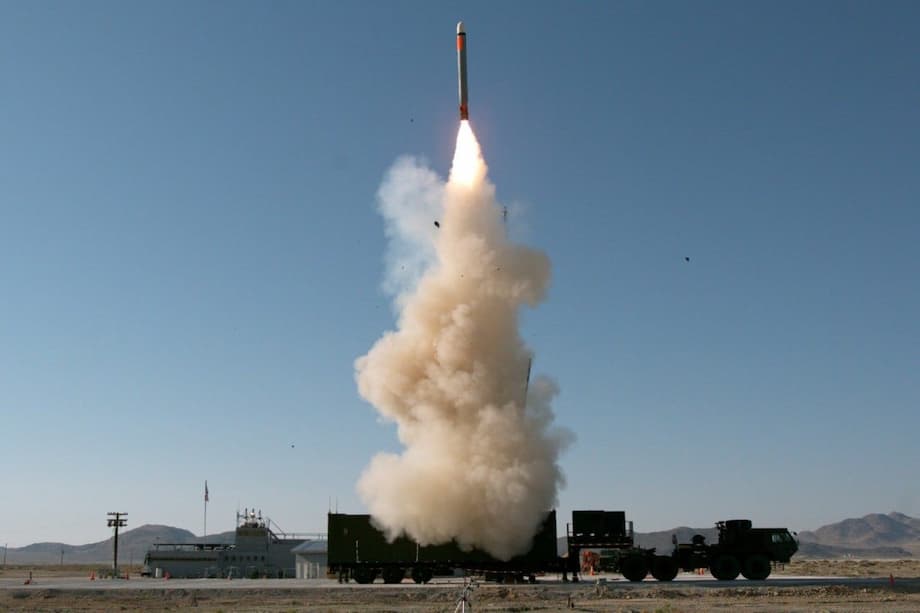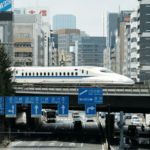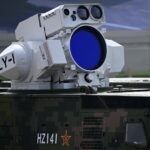A show of force in Japan and why it matters
The United States brought its Typhon ground based missile system to Marine Corps Air Station Iwakuni in southwest Honshu for the first time, ahead of the two week Resolute Dragon field exercise with Japan. The drills involve about 20,000 troops and feature warships, air defense units, and coastal strike batteries. Typhon will appear in training events but will not fire live rounds. Its arrival gives Washington and Tokyo a visible way to show that allied forces can quickly plug a long range strike system into the Japanese archipelago.
Typhon, also known as the Midrange Capability, can fire Tomahawk cruise missiles that can reach targets on Chinas eastern seaboard from western Japan. It can also launch the Standard Missile 6, a versatile weapon that can engage ships at sea or aircraft at ranges beyond 200 kilometers and, when used against land targets, follows a path that is harder to intercept. From positions along the first island chain, Typhon can threaten a wide set of ports, airfields, and command centers that support Chinese operations.
US officers say the battery in Japan will leave after the exercise. They declined to say where it will go next or whether it will return. That uncertainty is part of the message. The system is road mobile and designed for rapid movement by airlift, so it can appear in forward locations on short notice and relocate before an opponent can target it.
The appearance in Iwakuni follows a first Typhon deployment to the northern Philippines in April 2024 during joint drills, the first time since the 1987 Intermediate Range Nuclear Forces Treaty that land based missiles with ranges between 500 and 5,500 kilometers have been fielded in the region. In July 2025 a Typhon launcher in Australia fired an SM 6 at a ship target during Talisman Sabre, the first live use of the system outside the continental United States. A sister coastal battery used by the Marine Corps, known as NMESIS, has also been operating with allies in the Western Pacific, including a recent rotation to Okinawa.
Colonel Wade Germann, who leads the US Army task force that operates Typhon, said the system is meant to create headaches for any opponent planning a campaign.
“Employing multiple systems and different types of munitions creates dilemmas for the enemy,” Germann said. “The system can be deployed quickly when needed.”
For this rotation, Typhon is present for training and signaling rather than live firing. Its temporary stay still carries strategic weight.
What the Typhon system brings
Typhon is a trailer mounted, road mobile launcher system with four launcher vehicles per battery. Each launcher carries four missiles. A towed command post, generators, and support trucks make up the rest of a unit. The US Army built Typhon around missiles already in mass production, which shortens the timeline for fielding and reduces logistics burdens. In a crisis, C 17 transport aircraft can move the battery to austere airfields, where it can be unloaded and drive to preplanned hide sites.
From a position in Japan, Tomahawk missiles provide land attack reach out to roughly 1,000 miles, with versions that can also target ships. SM 6 brings fast, flexible shots at shorter ranges and can be used against air and surface targets. This mix lets a single battery hold at risk a diverse set of targets, from surface action groups to critical radar sites and air defenses, and to do it while remaining mobile and harder to find.
Tomahawk and SM 6, different tools for different targets
Tomahawk flies at subsonic speed and skims terrain to avoid detection. It is ideal for striking fixed or semi fixed targets like hangars, warehouses, fuel depots, and air defense sites. Japan itself has ordered Tomahawk, a sign that Tokyo intends to field longer reach conventional options of its own.
SM 6 began as an air defense missile. In a surface role, it can strike ships and land targets using a high speed profile similar to a ballistic missile on part of its flight. That profile stresses defenders because it compresses reaction time. In July an Army Typhon launcher fired an SM 6 against a ship target during joint drills in Australia, proving that the concept works outside US test ranges.
Policy shifts and the island chains
Washington left the Intermediate Range Nuclear Forces Treaty in 2019. That exit removed a decades old bar on ground based missiles with ranges between 500 and 5,500 kilometers. Since then the Army has focused on a portfolio known as Long Range Precision Fires. The family includes Typhon, a future Dark Eagle hypersonic missile, and the shorter range Precision Strike Missile. These programs aim to give joint forces land based options for sea control and deep fires in the Western Pacific.
Geography is central. The first island chain runs from Japan through Taiwan and the Philippines to Borneo. Placing mobile coastal launchers along that arc threatens ships and shoreside targets inside the South and East China seas. The United States wants many such launchers, spread across allied territory, so they are hard to destroy in a first salvo.
How Beijing is reacting
Chinese Foreign Ministry spokesperson Lin Jian condemned the appearance of Typhon in Japan and demanded its withdrawal.
“The US and Japan need to earnestly respect other countries security concerns and play a positive role for regional peace and stability with concrete actions, not the other way around,” Lin said. “Withdraw the system as soon as possible.”
He also pointed to Japans twentieth century record, saying that Tokyos military moves are closely watched by neighbors. That line is meant to pressure Japan by invoking wartime history.
“Japans military and security moves always draw close attention from its Asian neighbors and the international community,” Lin said.
Peoples Liberation Army units showed up near the Ryukyu Islands as the exercise got under way. Japanese forces tracked two Chinese guided missile destroyers that transited the Miyako Strait into the Pacific, followed a day later by a frigate and a resupply ship. A suspected Chinese drone flew between Yonaguni and Taiwan, and a Chinese Y 9 patrol aircraft passed between Okinawa and Miyako. Japans Joint Staff sent a destroyer and a P 3C patrol plane to monitor the ships and scrambled fighter jets in response to the flights.
Russia has voiced concern as well. Foreign Ministry spokesperson Maria Zakharova said the land based American missile battery threatens her countrys security and warned of a response.
“The Typhon poses a direct strategic threat,” she said, adding that Russia would take “appropriate military technical measures” if deployments proceed.
Potential Chinese countermeasures
Analysts expect China to refine a set of counters that span missiles, sensors, ships, aircraft, and information tools. On the missile side, Beijing has highlighted the DF 100, a supersonic cruise missile first revealed in 2019 and shown again in new footage for the Peoples Liberation Armys 98th anniversary. Chinese sources claim it flies at around Mach 4, can travel up to 3,000 to 4,000 kilometers, and is accurate enough to hit time sensitive targets. Road mobile or air launched from an H 6N bomber, it could reach US and allied bases from Okinawa to Guam.
Chinese planners also prize complex salvos that mix ballistic and cruise missiles with decoys and drones. That combination can overwhelm defenses, drain interceptor stocks, and compress decision time. In such a scenario, a mobile battery like Typhon could be targeted with fast ballistic missiles while slower cruise missiles and drones hunt support trucks and reload sites.
Long range strikes depend on a web of satellites and other sensors for targeting. China has built a large space based intelligence, surveillance and reconnaissance network, reportedly numbering in the hundreds of satellites. Those assets follow predictable orbits and have limited protection. Disrupting them with jamming, cyber action, or kinetic means would reduce the accuracy and volume of follow on missile salvos. The United States and its allies are investing in ways to blind and confuse that network.
A likely playbook
- Increase Rocket Force patrols near coastal launch areas and expand relocation drills for road mobile units.
- Boost navy and air patrols through the Miyako Strait and the Bashi Channel to gather data on allied missile positions and patterns.
- Expand electronic warfare, GPS spoofing, and cyber operations against command posts, communications, and logistics for mobile launchers.
- Add more long range anti ship and land attack missiles to coastal brigades and bases facing Japan and Taiwan.
- Use diplomatic pressure and trade tools to raise costs for Japan and the Philippines.
- Deepen joint training with Russia, including bomber and naval patrols near Japan.
Tokyos changing defense posture
Japan has moved quickly to add reach and resilience to its forces. Tokyo has committed to buying Tomahawk missiles and is extending the range of the Type 12 surface to ship missile. Government plans call for defense spending to reach 2 percent of gross domestic product by 2027. A record level budget request for 2026 includes funds for new littoral defense systems labeled SHIELD, additional F 35 fighters, KC 46A tankers, long range precision weapons, an integrated air and missile defense network, and a small satellite constellation for tracking and targeting.
Maritime law enforcement is growing too. The Japan Coast Guard is adding larger patrol vessels with helicopter decks, while the United States Coast Guard is buying more Sentinel class cutters for operations out of Guam and other Pacific posts. These assets help manage gray zone pressure around the Senkaku Islands in the East China Sea and complement military capabilities.
All of this reflects a shift in Japans long standing, exclusively defense oriented policy. Leaders now speak of a counterstrike ability meant to deter and defeat missile attacks. Tokyo still avoids permanent basing of foreign long range strike systems, but it increasingly hosts temporary deployments for training that build familiarity with allied equipment and tactics.
A region wide web of fires
The Philippines was the first Asian country to host Typhon. Even without live firing last year, the presence put Chinese bases in southern provinces within reach of American Tomahawks. Philippine officials asked that a launcher remain after the exercise as tensions rose around reefs in the South China Sea. The Marine Corps sent its ship killing NMESIS weapon to the Philippines in the spring, and later moved the system to Okinawa.
In Australia in July 2025, the Army fired an SM 6 from a Typhon launcher at a maritime target during the Talisman Sabre exercise. That confirmed allied training and logistics for the system on foreign soil. Across the region, Washington is trying to mass affordable anti ship weapons in many places so that any attempt to dominate the sea lanes faces crossfires from land.
The Multi Domain Task Force at the heart of Typhon operations aims to stitch together sensors from space, air, sea, and land, then cue weapons to targets in minutes. Typhon fits that approach by using proven missiles, a simple launcher, and fast deployment drills. Quantity matters as much as quality. A larger number of good enough launchers and missiles can shape a campaign in the opening days of a conflict.
Risks, scenarios, and escalation control
Typhon will leave Japan when Resolute Dragon ends. The message is still plain. When allies choose, a battery can arrive quickly, disperse on roads, and bring powerful land attack and anti ship options into a theater that is shaped by long distances. That complicates Chinese planning for operations near Taiwan and the Ryukyu Islands.
In a crisis, Chinese planners would try to find and strike a mobile battery early. That risk pushes Japan and the United States to invest in camouflage, decoys, hardened shelters, and rapid shoot and scoot tactics. Dispersed logistics and frequent relocation would aim to keep launchers alive long enough to influence a battle at sea or disrupt air operations.
Escalation control will hinge on communication and restraint. Typhon fires conventional missiles, which reduces nuclear ambiguity compared with many ballistic systems. Even so, the speed of modern strikes leaves little time for leaders to make decisions. Clear signaling, steady military channels, and predictable training events help limit unwanted spirals during tense moments.
Key Points
- The US showcased Typhon at Iwakuni during Resolute Dragon, a two week exercise with about 20,000 personnel.
- The battery will depart after the drills. US officers did not disclose its next location or a possible return to Japan.
- Typhon fires Tomahawk and SM 6 missiles, allowing land attack and anti ship strikes from the first island chain.
- Beijing demanded withdrawal and cited history concerns. Chinese warships and aircraft operated near Okinawa during the drills.
- Russia warned that Typhon is a strategic threat and signaled potential military technical countermeasures.
- China could respond by fielding systems like the DF 100 and by using complex missile salvos, while relying on a large ISR network.
- Japan is expanding defense spending, buying Tomahawks, improving domestic missiles, and building integrated air and missile defense.
- US deployments in the Philippines and Australia, plus coastal systems in Okinawa, show a plan to disperse land based fires across Asia.
- The temporary deployment signals a rapid forward positioning option that raises costs for any attack without a permanent base.




